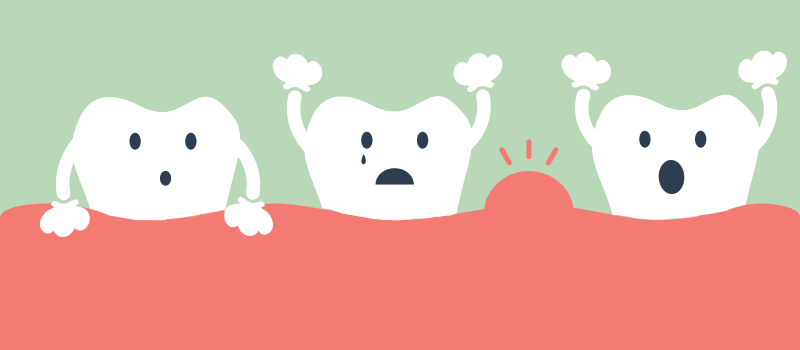What’s the Buzz
The Bee Healthy Blog
Minocycline for Gum Disease: Uses & Side Effects

Minocycline belongs to a group of medications called tetracycline antibiotics. It is used to treat a wide range of bacterial infections. Your dentist may prescribe minocycline hydrochloride microspheres (brand name: Arestin) for periodontal (gum) disease. Minocycline is available in a wide variety of dosage forms, such as oral tablets, oral capsules, topical foam, and intravenous solutions. Keep in mind that this article will focus on the minocycline microsphere, the dosage form that is specifically used to treat periodontitis (gum disease) with certain dental procedures like scaling and root planing. Please continue reading to learn more about minocycline microspheres (Arestin) uses and side effects.
Is minocycline good for gum infection?
Minocycline is good for gum infections. This antibiotic works by preventing the bacterial growth or killing the bacteria. As a result, it helps reduce gum inflammation. Minocycline microspheres are placed directly into infected gum pockets after dental procedures like scaling and root planing to treat periodontal disease.
Adding minocycline microspheres to scaling and root planing (SRP) allows this antibiotic to stay local at the site of infection and remain active for an extended period of time. By doing so, bacteria-caused gum infection is targeted directly. Thus, gum can heal better while reducing pocket depth.
How to use minocycline for periodontal disease?
As mentioned, while there is a wide range of minocycline dosage forms, minocycline microspheres (Arestin) is specifically designed to treat gum disease as part of SRP and routine oral hygiene maintenance. Minocycline microspheres (Arestin) come in the form of a subgingival sustained-release powder to be applied directly into the infected gum pockets and remain active over a prolonged period of time to eradicate the bacteria causing gum disease.
Your dental professional will apply this medication for you. They will decide the dose after probing pocket depth. You won’t need local anesthesia for the subgingival (below the gums) application of minocycline. There will be no dressing left in place in your mouth after the treatment. You may need to come back for a follow-up after the initial treatment. Sometimes, three treatments at 3-month intervals are required to fully treat periodontitis.
Why do I need to avoid sticky foods while on subgingival minocycline?
You need to avoid eating sticky, hard, crunchy foods for 1 week after minocycline treatment, as these foods can cause the medicine to become dislodged. Follow all the instructions from your dental healthcare professional for the best results. The recommendations will likely include:
-
Avoid hard, crunchy, or sticky foods for 7 days.
-
Avoid brushing near the treated teeth for 12 hours.
-
Do not use dental floss or other cleaning tools that go in between the teeth for 10 days.
-
Do not use toothpicks or probe the treated areas with your tongue or fingers.
Why do I need to be cautious with sun exposure while on minocycline?
Some people develop photosensitivity, which can manifest as an exaggerated sunburn reaction, after taking minocycline and other tetracyclines. You should avoid unnecessary exposure to direct sunlight or UV rays and wear protective clothing and sun block & lip balm with at least skin protection factor (SPF) 30 during minocycline treatment. Call your doctor without delay if you develop skin redness or signs and symptoms of severe sunburn.
Remember to wear protective clothing such as long-sleeve shirts, pants, and hats in addition to adequate sunscreen application to prevent adverse effects caused by sun exposure. If possible, you should stay out of direct sunlight, especially between 10:00 AM and 3:00 PM when the UVB radiation is at its strongest.
What other precautions should I take while on minocycline for gum infection?
-
Tell your health care professional if you have ever had an unusual or allergic reaction to Arestin (minocycline) or other tetracyclines in the past.
-
Give your provider a list of all your medications, including prescription drugs, over-the-counter medicines, dietary supplements, and herbal products.
-
Avoid direct sunlight exposure and tanning beds or sun lamps.
-
Use a sun block product with SPF 30 or higher.
-
Keep all your dental appointments.
What is the most common side effect of minocycline?
Common side effects of minocycline for gum infection include bleeding gums, toothache, swelling or redness in the mouth, headache, and flu symptoms (fever, chills, sore throat). Less common side effects include dyspepsia (indigestion or sour stomach), belching, cough. Call your doctor for medical advice if the side effects are severe or do not go away in a few days.
What are the bad side effects of minocycline?
More severe side effects of minocycline are rare, but they can happen in some cases:
-
An unusual or allergic reaction with skin rash, hives, itching, blistering, and peeling skin
-
Swelling of the face, itching, fever, and enlarged lymph nodes
-
Anaphylaxis (throat closing)
-
Trouble breathing or swallowing
-
Liver injury: loss of appetite, nausea, right upper stomach pain, dark urine, unusual weakness, and jaundice
-
Development of autoimmune disorders, including a lupus-like syndrome with muscle pain and joint pain
Call your doctor immediately or seek emergency medical attention if you develop a severe reaction to minocycline.
What are minocycline drug interactions?
Drug interactions with certain medicines can lead to an increased risk of adverse effects or prevent one or both medicines from working properly. Minocycline can interact with the following medicines:
-
Anticoagulants or blood thinners such as warfarin (Coumadin, Jantoven)
-
Other antibiotics, such as penicillin
-
Ergot medications such as cabergoline, bromocriptine (Parlodel, Cycloset), methylergonovine (Methergine), dihydroergotamine (Migranal, D.H.E. 45), ergonovine (Ergotrate), ergoloid mesylates (Hydergine), ergotamine (Ergomar, Migergot, in Cafergot)
-
Current or recent use of isotretinoin (Amnesteem, Absorica, Claravis, others)
This is not a complete list of minocycline drug interactions. This information pertains to minocycline oral tablets. While drug interactions with minocycline subgingival may be similar, minocycline subgingival is applied locally. Therefore, the drug interactions may not be as severe as oral minocycline. Give your doctor a full list of your medications before starting treatment with minocycline. Check with your health care professional before starting other medicines while on minocycline.
Who should not take minocycline?
Minocycline microspheres may not be safe for everyone. If you have one of the following conditions, your doctor will determine if minocycline is an appropriate treatment option for you:
-
A history of allergic reactions to minocycline or other medications from the same group (tetracyclines).
-
A history of oral thrush (oral candidiasis).
-
A history of asthma, systemic lupus erythematosus (SLE), intracranial hypertension (pseudotumor cerebri), or high pressure in the skull (with symptoms such as blurry vision, double vision, headaches, vision loss), kidney disease, or liver disease.
-
If you are pregnant or under 8 years old. The use of minocycline and other tetracycline antibiotics can cause permanent discoloration of the teeth when used during the last half of pregnancy and in children up to the age of 8 years while tooth development is taking place.
-
If you are breastfeeding (this medicine can alter milk production. Your doctor may ask you to monitor the infant for adequate milk intake if you are prescribed minocycline).
-
Immunocompromised patients, such as those with diabetes, HIV, or undergoing chemotherapy or radiation therapy.
The above list is not necessarily all-inclusive. Give your doctor a complete medical history and list of current medications before starting minocycline for gum infection.
What is the strongest antibiotic for gum disease?
Tetracyclines such as minocycline are widely used to treat periodontal disease, including severe gum inflammation. Other antibiotics that are used to treat gum infections include doxycycline, metronidazole, amoxicillin, amoxicillin clavulanate potassium, ciprofloxacin, and macrolides. Your health care professional will choose the best antibiotic to treat periodontitis (gum inflammation) for you based on the severity of the condition. Unlike other systemic agents, such as oral or injectable antibiotics, it is important to remember that Arestin has the advantage of providing a localized effect targeting bacteria causing gum diseases. As a result, side effects also tend to be more tolerable than oral antibiotics.
References:












SOCIAL